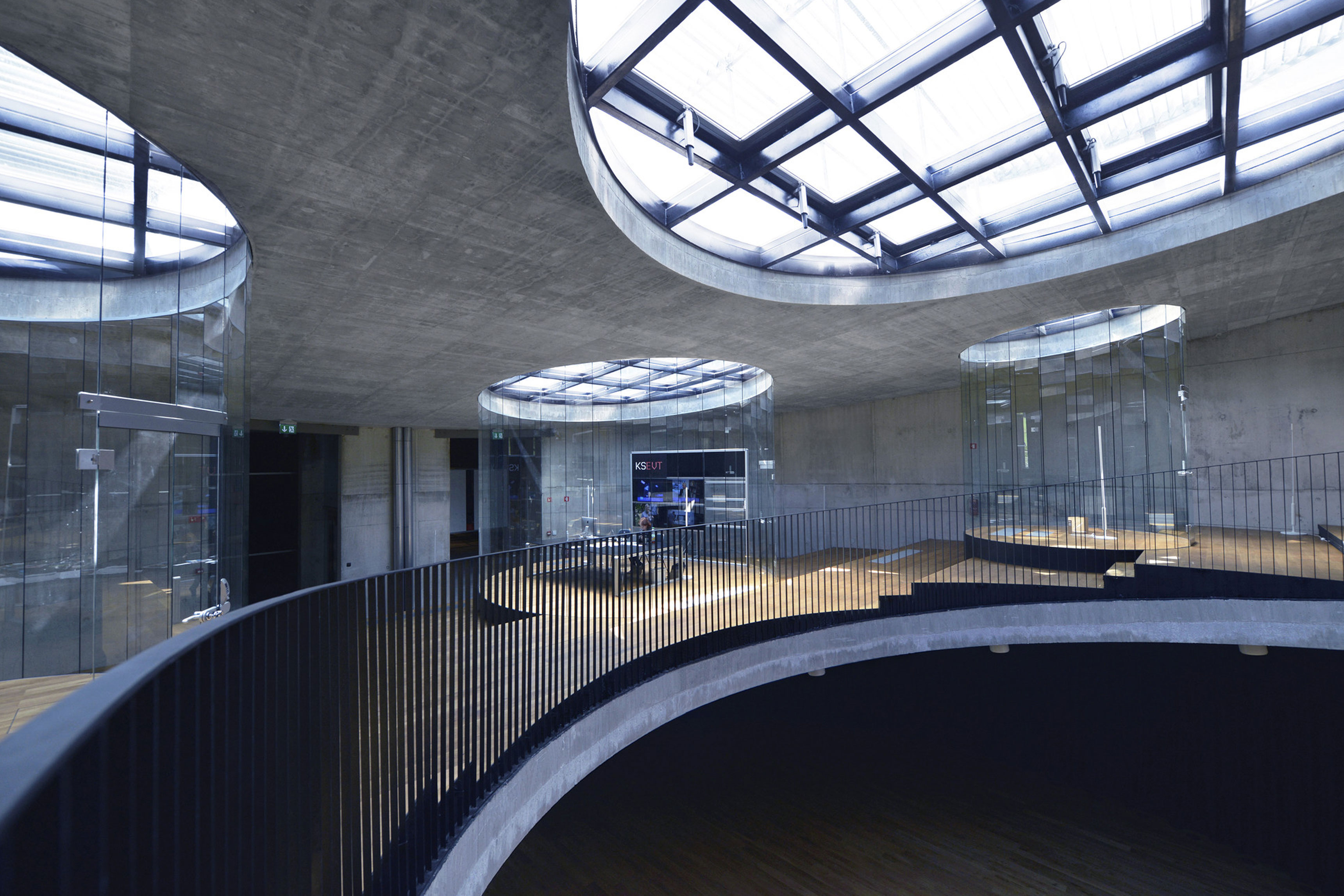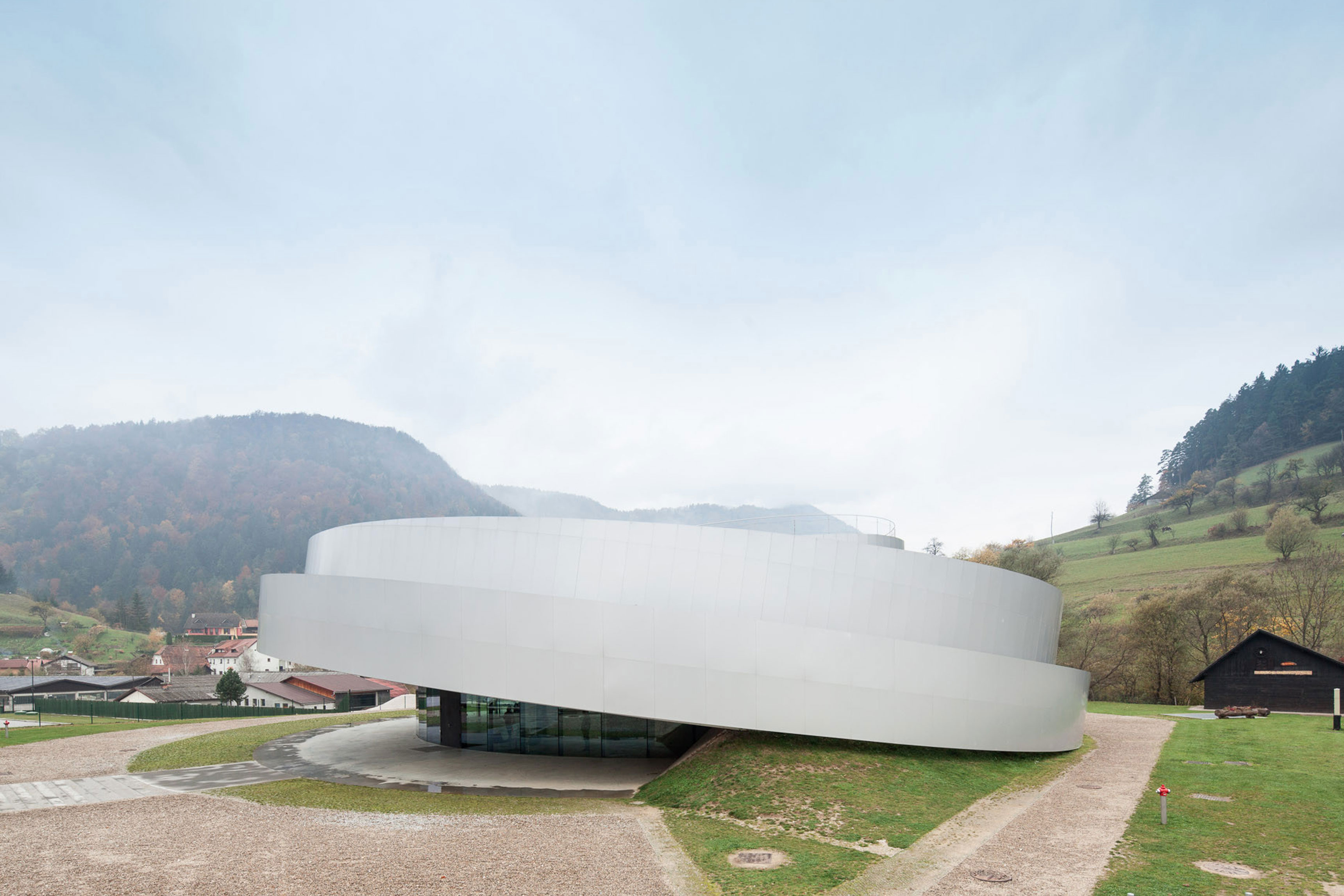The Cultural Centre of European Space Technologies (KSEVT) was jointly designed by four Slovenian architectural firms: Bevk Perović Arhitekti, Dekleva Gregorič Arhitekti, OFIS Arhitekti, and Sadar + Vuga Arhitekti. The building design takes inspiration from the first geostationary space station, or to be more precise the habitation wheel space station envisaged by rocket engineer Herman Potočnik Noordung, in 1929. With its program the KSEVT will substantially supplement and emphasize the local cultural and social activities of the former Community Centre in Vitanje town with additional cultural events (exhibitions, events) and scientific activities (research, conferences) strongly connected to the culturalisation of the space. The building features a series of interlocking rings that lie on top of each other to create a continuous ramped structure. The upper part of the building houses a research area, while the lower parts will house exhibition spaces, a multi-purpose hall and local library.




